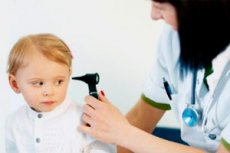Medical expert of the article
New publications
Hearing test
Last reviewed: 04.07.2025

All iLive content is medically reviewed or fact checked to ensure as much factual accuracy as possible.
We have strict sourcing guidelines and only link to reputable media sites, academic research institutions and, whenever possible, medically peer reviewed studies. Note that the numbers in parentheses ([1], [2], etc.) are clickable links to these studies.
If you feel that any of our content is inaccurate, out-of-date, or otherwise questionable, please select it and press Ctrl + Enter.

When examining deafness, determine the side of hearing loss, its degree and cause. When examining such a patient, at least two questions must be resolved: is this deafness curable or not and is it a symptom of some other lesion (for example, neuroma of the auditory nerve). But first of all, when hearing loss occurs, it is necessary to exclude the presence of a dense sulfur plug in the external auditory canal, which should be removed in this case.
 [ 1 ]
[ 1 ]
Tests using a tuning fork
A tuning fork with a frequency of 512 Hz is used.
Rinne test. If the patient's hearing is normal, the air conduction of sound waves is better than that of bone tissue. The tuning fork should be held lateral to the external auditory canal, with its teeth at the same level and parallel to the entrance to the outer ear, and when examining the sound conductivity of bone tissue, the stem of the tuning fork is placed on the mastoid process. If air conduction of sound is better than bone conduction, then we speak of a positive Rinne test. This test is positive in sensorineural (perceptual) hearing loss. A negative Rinne test (bone conduction is better than air conduction) indicates the presence of obstacles to the conduction of sound waves to the eardrum. If, on the one hand, severe or complete sensorineural deafness is diagnosed, then a false-positive Rinne test may be obtained, since the cochlea of the other ear can perceive sound due to bone conduction. In such cases, the patient should be placed in a Barany noise chamber, which prevents sound from leaking to the other ear while the test is being performed.
Weber test. The handle of a vibrating tuning fork is placed on the center of the patient's forehead. The doctor should ask the patient with which ear he hears the sounding tuning fork better. The sound is better perceived by the affected ear in case of "conductive" (when sound waves are not conducted through the outer ear) deafness, but by the contralateral ear in case of sensorineural deafness, and is perceived equally on both sides if the patient has no hearing impairment.
Audiometric tests
These tests allow a quantitative assessment of the degree of hearing loss and its side. Pure tone audiometry uses electronic equipment that produces sounds of varying strength with a frequency of 250-8000 Hz. The test is conducted in a soundproof room. The patient must say when he begins to hear the sound, the intensity of which is recorded in decibels (dB). This is how air conduction is recorded. The threshold of bone conduction is also recorded, but using a sensor placed on the mastoid process.
 [ 2 ], [ 3 ], [ 4 ], [ 5 ], [ 6 ]
[ 2 ], [ 3 ], [ 4 ], [ 5 ], [ 6 ]
Tympanometry (acoustic impedance)
In this method, the probe completely closes the external auditory canal, and by manoeuvring the pressure, the examiner passes it into the external auditory canal, after which the flexibility of the eardrum is recorded. A normal eardrum gives a smooth dome-shaped curve. In the presence of fluid in the middle ear, this curve becomes flattened. If the ear perceives a sharp, intense sound (more than 85 dB), a notch appears on the curve, since the stapes muscle contracts (which is mediated through the VII cranial nerve). In 5% of the population, the stapes reflex is absent (with a normal hearing aid).
Speech audiometry
This method determines the patient's ability to distinguish individual words in speech pronounced at a volume exceeding the hearing threshold. This study can answer the question of whether the sensorineural defect is localized in the cochlea or in the auditory nerve; it also allows a prognosis to be made as to whether the patient can be helped or not.
Assessing hearing ability in children
To conduct the above-described hearing tests on children, it is necessary to have contact with them. In children under 6 months, hearing development is judged by how they flinch or blink in response to a sound stimulus. At 6 months, they already turn their heads in response to a particular sound. In a child over 3 years of age, audiometry can already be performed.
 [ 7 ]
[ 7 ]

